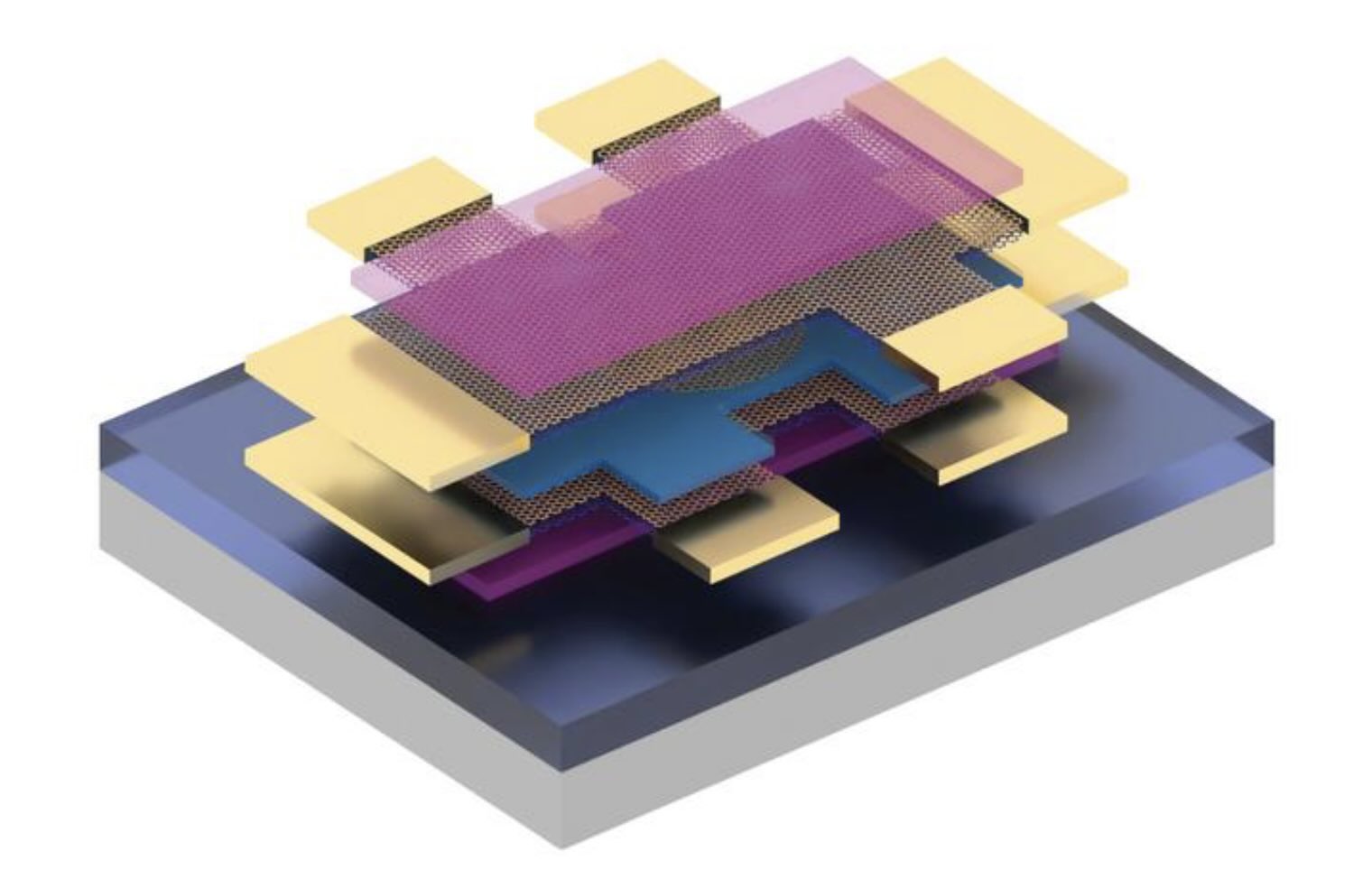MIT researchers exploring the use of a “magic-angle” have discovered a new path to superconductivity, advancing the quest to develop room-temperature superconductors that would bring the technology into more common use.
Superconductors allow energy to be transferred losslessly through a system, but come with the significant disadvantage of requiring ultra-low temperatures that are artificially generated by bulky, expensive cooling systems.
Although the technology is currently limited to specialized applications, such as MRI machines and particle accelerators, researchers have been seeking a way to make superconductors operate at room temperature, thereby expanding their use.
An Unconventional Superconductor
As presented in a recent paper published in Science, MIT researchers pursuing unconventional superconductors discovered evidence for a new type through their investigation of “magic-angle” twisted tri-layer graphene (MATTG). Graphene is a two-dimensional material composed of just a single layer of carbon atoms, crafted by removing an ultra-thin layer from a block of graphite. The material exhibits exotic properties arising from the stacking of three graphene sheets at a specific angle.
Previous research first theorized that stacking graphene layers at specific angles would produce exotic electronic behavior. By 2018, the senior author of the new paper, Pablo Jarillo-Herrero, the Cecil and Ida Green Professor of Physics at MIT, and colleagues were working on the first magic-angle graphene experiments, which helped to give rise to the new field of “twistronics.” As their work progressed, the researchers experimented with different materials and layer counts, revealing some unconventional signatures of superconductivity.
When passing through any superconductor, instead of repelling and scattering, electrons join together as what are known as “Cooper pairs,” which move frictionlessly through the system. However, the MATTG-produced pairs remained unique.
“In conventional superconductors, the electrons in these pairs are very far away from each other, and weakly bound,” said co-author Jeong Min Park. “But in magic-angle graphene, we could already see signatures that these pairs are very tightly bound, almost like a molecule.”
“There were hints that there is something very different about this material,” Park said.
Minding the Gap
“When a material becomes superconducting, electrons move together as pairs rather than individually, and there’s an energy ‘gap’ that reflects how they’re bound,” Park explained. “The shape and symmetry of that gap tells us the underlying nature of the superconductivity.”
In making their discovery, the MIT researchers employed an experimental platform that enabled them to observe the superconducting gap in real time. This platform combined measurements down to the quantum scale in a unique way to resolve the typically challenging-to-observe gap.
The work began with a technique known as tunneling spectroscopy, which operates on the quantum scale by measuring how easily an electron can tunnel through a material. The MIT researchers combined that technique with an electrical transport measurement. That tunneling and transport combination produced an unambiguous measurement of the superconducting gap, which the researchers then observed as it changed under differing temperature and magnetic field conditions.
Exploring the Results
“There are many different mechanisms that can lead to superconductivity in materials,” says study co-lead author Shuwen Sun, a graduate student in MIT’s Department of Physics. “The superconducting gap gives us a clue to what kind of mechanism can lead to things like room-temperature superconductors that will eventually benefit human society.”
MATTG’s superconducting gap revealed just how unusual the material truly is. The strange superconductivity of the MATTG material showed a V-shaped profile, which is highly unusual for conventional superconductors, which typically exhibit a flat profile. The mechanism causing this remains unknown and will require further investigation.
“In this magic-angle graphene system, there are theories explaining that the pairing likely arises from strong electronic interactions rather than lattice vibrations,” Park said. “That means electrons themselves help each other pair up, forming a superconducting state with special symmetry.”
Continuing the Hunt for Superconductors
Following their success in this study, the team aims to continue exploring MATTG and other 2D materials with the measurement platform.
“This allows us to both identify and study the underlying electronic structures of superconductivity and other quantum phases as they happen, within the same sample,” Park says. “This direct view can reveal how electrons pair and compete with other states, paving the way to design and control new superconductors and quantum materials that could one day power more efficient technologies or quantum computers.”
“Understanding one unconventional superconductor very well may trigger our understanding of the rest,” said Jarillo-Herrero in a statement. “This understanding may guide the design of superconductors that work at room temperature, for example, which is sort of the Holy Grail of the entire field.”
The paper, “Experimental Evidence for Nodal Superconducting Gap in Moiré Graphene,” appeared in Science on November 6, 2025.
Ryan Whalen covers science and technology for The Debrief. He holds an MA in History and a Master of Library and Information Science with a certificate in Data Science. He can be contacted at ryan@thedebrief.org, and follow him on Twitter @mdntwvlf.


